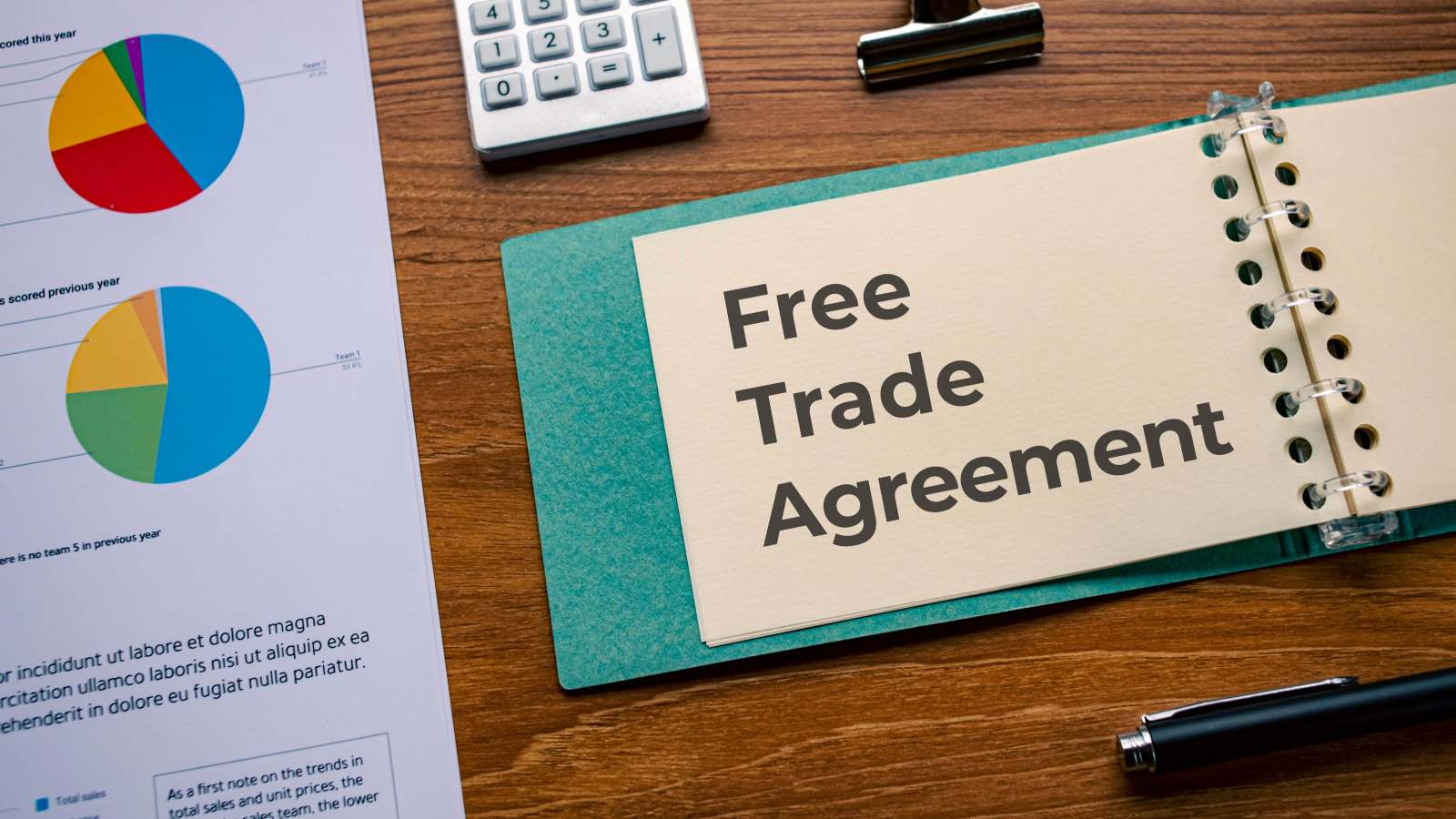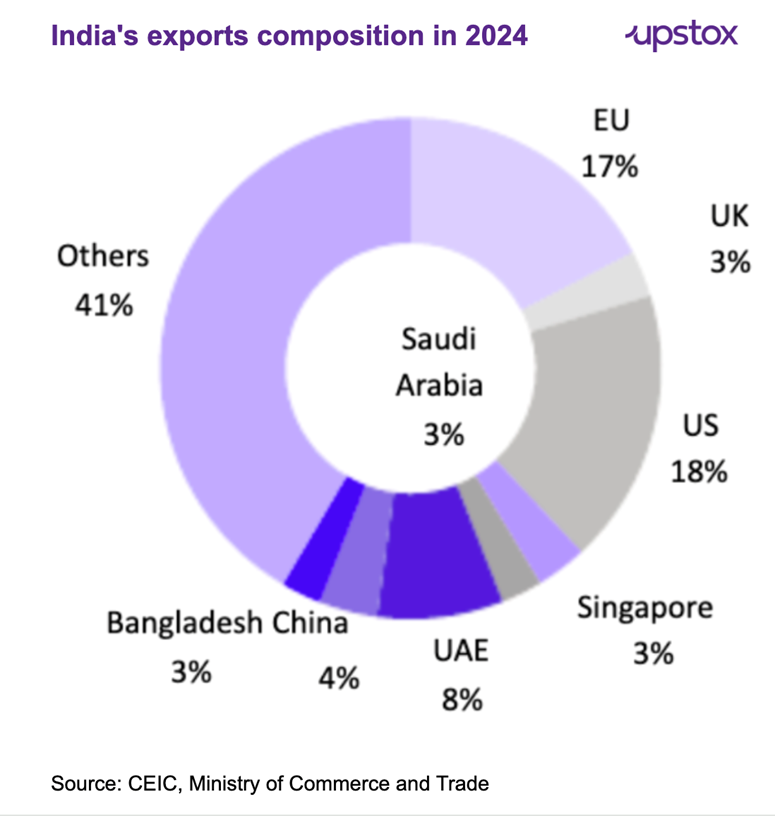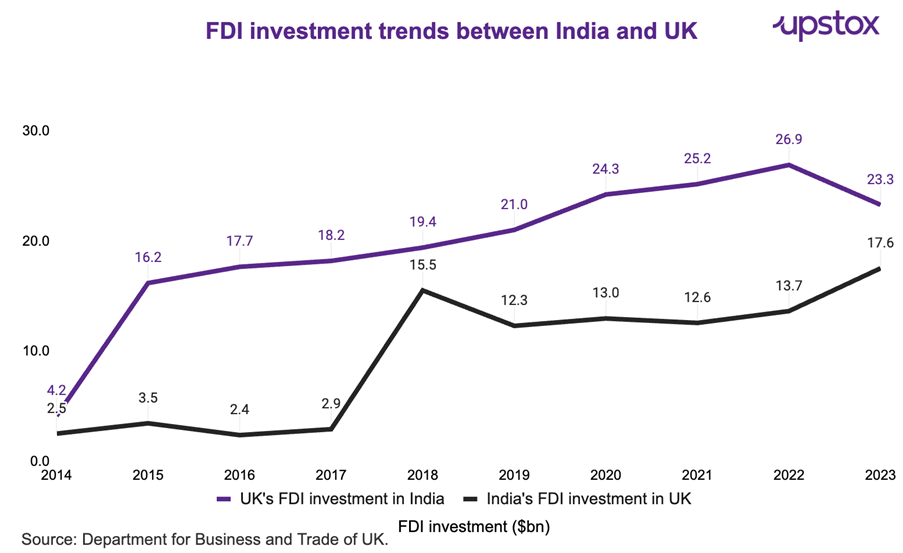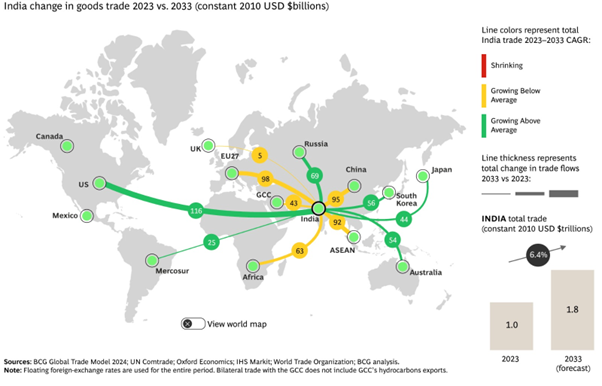Upstox Originals
How the India-UK FTA catalyses economic growth
.png)
9 min read | Updated on May 07, 2025, 19:48 IST
SUMMARY
This article delves into the recently concluded Free Trade Agreement (FTA) between India and the United Kingdom, examining its core components, potential economic impacts, and the opportunities it presents for various sectors.

The India-UK FTA is expected to significantly boost trade between the two countries
A Free Trade Agreement (FTA) is an accord between two or more countries to reduce or eliminate barriers to trade and investment. These barriers can include tariffs (taxes on imports), quotas (limits on the quantity of imported goods), and non-tariff barriers (such as regulatory hurdles, standards, and customs procedures).
India-UK FTA: What has happened?
The UK and India have successfully concluded negotiations on a comprehensive FTA encompassing strategic agreements, tariffs and trade (import & export), investments (FDI), innovation, technology, regulations, financial services, taxation for residents in only one country etc.
India-UK Trade: A snapshot
Even before the FTA, the UK was India’s 5th largest merchandise export market; the bilateral trade between India and the UK was ~$60 billion (£43 billion), projected to double by 2030.

India-UK trade snapshot
| in $ billion | Total trade value | Imports Value | Exports value | Trade balance |
|---|---|---|---|---|
| 2015 | 22.0 | 9.5 | 12.5 | 2.9 |
| 2016 | 22.0 | 8.3 | 13.7 | 5.4 |
| 2017 | 25.3 | 9.4 | 16.1 | 6.7 |
| 2018 | 29.9 | 12.9 | 17.0 | 4.2 |
| 2019 | 32.3 | 12.5 | 19.8 | 7.5 |
| 2020 | 27.1 | 11.3 | 15.8 | 4.4 |
| 2021 | 33.8 | 13.8 | 19.8 | 6.0 |
| 2022 | 47.6 | 19.6 | 28.0 | 8.4 |
| 2023 | 52.8 | 21.7 | 31.1 | 9.4 |
| 2024 | 57.1 | 22.9 | 34.2 | 11.3 |
Source: Ministry of Commerce and Trade of India, Department for Business and Trade of UK. Figures have been converted into $ considering the current £/$ price.
FDI snapshot
In the last decade, the UK’s FDI investment into India has grown ~5x, from ~$4.2 billion in 2014 to $23.3 billion in 2023. Grant Thornton’s recent International Business Report indicated that 42% of UK businesses surveyed without an existing presence in India plan to build one in the next 2 years.
Of those with an existing presence, 96% plan to expand further. This deal supports those efforts, with 72% of UK businesses surveyed saying that an FTA would encourage them to explore opportunities in the Indian market.

Overall economic impact of the FTA
The deal will lead to a reduction in tariffs (up to zero duty) by both countries for more than 90% of the trade. It is eventually expected to increase India’s exports to the UK by a further 25% and overall bilateral trade by 38% by 2040.
| Particulars | ||
|---|---|---|
| Coverage | % of India's exports to the UK where tariffs will be reduced | 99% |
| Coverage | % of India's imports from the UK where tariffs will be reduced | 92% |
| Estimated impact (by 2040) | % increase in bilateral trade due to FTA | 38% |
Source: Ministry of Commerce and Trade of India, Department for Business and Trade of UK
For the UK
-
The FTA is estimated to increase GDP by $6.4 billion annually by 2040.
-
Bilateral trade is expected to increase by a further $34.1 billion annually by 2040
-
UK products are estimated to benefit from annual savings of up to $536 million as India will cut tariffs on existing trade.
For India:
-
The FTA is seen as a game changer that will set India further on the path of rapid economic growth and benefit its global integration.
-
It is expected to open up massive export opportunities for labour-intensive sectors and other important industries like textiles, marine products, leather, footwear, sports goods and toys, gems and jewellery. Even higher value sectors like engineering goods, auto parts, engines, and organic chemicals are expected to benefit.
-
This will substantially improve Indian goods' competitiveness in the UK vis-à-vis other countries.
-
The agreement aims to protect India's core interests while opening doors for greater participation in global value chains, as the FTA will also give access to potential EU markets, which form 17% of India’s overall exports.
Sectors that expected to benefit
For India
The table below gives a list of sectors likely to benefit. While media articles have highlighted that most of these sectors will see zero duty, official details on category-specific tariff structures are yet to be released.
| Sector | Duty Range | Under FTA* | Exports in 2024 ($Bn) | % of India's exports to the UK |
|---|---|---|---|---|
| Electrical machinery | upto 14.0% | Zero duty | 2.1 | 9.2% |
| Transport/Auto | upto 18.0% | Zero duty | 1.8 | 7.9% |
| Mechanical machinery | upto 8.0% | Zero duty | 1.6 | 6.9% |
| Textile/Clothing | upto 12.0% | Zero duty | 1.5 | 6.5% |
| Gems & jewellery | upto 4.0% | Zero duty | 0.9 | 4.0% |
| Chemicals | upto 8.0% | Zero duty | 0.7 | 3.2% |
| Leather/Footwear | upto 16.0% | Zero duty | 0.5 | 2.1% |
| Plastic/Rubber | upto 6.0% | Zero duty | 0.4 | 1.9% |
Source: Ministry of Commerce and Trade of India, Department for Business and Trade of the UK. *Note: As per media reports only.
-
While this FTA can also foster partnerships in India for Indian alcoholic brands, as they will have access to foreign-made liquor as well as their know-how
-
IT/ITeS, financial services, a variety of professional services (architecture, engineering, computer-related services, and telecommunication services), and educational services are expected to gain traction
-
A significant win is the three-year exemption from social security payments for Indian employees working temporarily in the UK under the Double Contribution Convention, enhancing the competitiveness of Indian service providers and reducing their tax burden.
For the UK
-
The UK government mentioned that they will save $536 Mn in tariffs annually due to FTA. Following sectors are expected to benefit
-
Advanced manufacturing sectors, including automotives (tariffs on car imports from UK reduced from over 100% to 10% under a quota).
-
UK products like cosmetics and alcohol that are sold around the world will benefit from cut tariffs (from 150% to 75% for whiskies)
-
Agri-food products, soft drinks, telecom, and construction services are other sectors to benefit from the FTA.
-
FTA will provide access to India's public procurement market, covering approximately 40,000 tenders worth at least $51 billion a year. UK companies will get exclusive treatment under the 'Make in India' policy if at least 20% of their product/service is from the UK.
India's FTA negotiation landscape in Asia
India had 18 FTAs under negotiation, which was the highest among the listed Asian economies. Discussions were fast-paced on FTAs following the G-20 Summit in November 2024 and resumed intense FTA negotiations in February 2025, with a US trade deal also in the works.
| Economy | Under negotiation | Signed |
|---|---|---|
| Australia | 3 | 23 |
| Bangladesh | 3 | 5 |
| China | 9 | 34 |
| India | 18 | 18 |
| Japan | 7 | 21 |
| Indonesia | 11 | 19 |
| Malaysia | 8 | 10 |
| South Korea | 12 | 28 |
| Singapore | 7 | 35 |
| Vietnam | 2 | 16 |
Source: Asian Development Bank
India is poised to benefit from a combination of favourable geopolitical and domestic trends:
-
Robust domestic demand: The rapidly growing consumption market is driving strong domestic demand, positioning India as a key player in global trade.
-
Strategic FTAs: Ongoing Free Trade Agreements with major economies like the UK and US (under consideration) are set to further enhance India's global trade opportunities.
-
China+1 Shift: As companies look to diversify their supply chains, India is capitalising on the China+1 strategy.
-
Falling crude prices and strong forex reserves: With falling crude prices and robust foreign exchange reserves, India’s economic resilience is strengthening, providing a solid foundation for sustained growth.
These factors are driving India to achieve double the global trade growth rate from 2023 to 2033, as projected by BCG. India is not only riding on domestic momentum but also strategically positioning itself on the global trade map.

In summary
The India-UK Free Trade Agreement, concluded on May 6, 2025, represents a historic and ambitious milestone in the economic relationship between the two nations. It is a comprehensive deal designed to significantly boost bilateral trade, stimulate investment, create jobs, and foster innovation in both economies.
For India, the FTA opens massive export opportunities, particularly for its labor-intensive sectors and its burgeoning services industry, with 99% of its exports to the UK set to benefit from zero duties.
For the UK, the deal provides preferential access to one of the world's fastest-growing major economies, offering substantial tariff reductions on key exports like whisky, cars, and manufactured goods, alongside enhanced opportunities in services and government procurement.
The FTA is not just about tariff reductions; it establishes a framework for good regulatory practices, digital trade, intellectual property protection and addresses modern trade elements like anti-corruption, labour rights, and gender equality.
The success of the FTA will hinge on its effective implementation, the finalisation of the legal text, and the subsequent adherence by both parties to its provisions.
About The Author
Next Story
